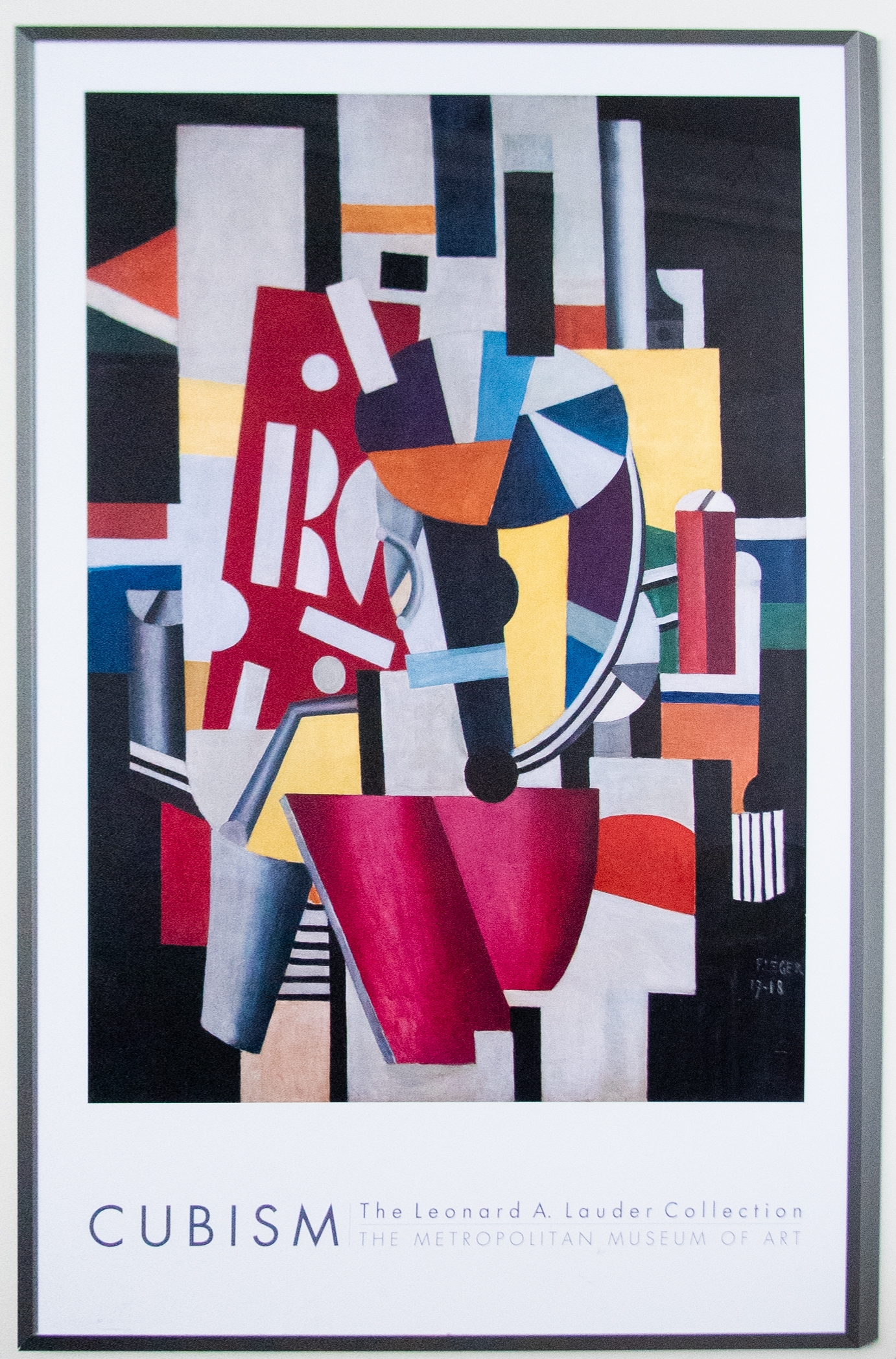The Central Library's 10th Street accessible entrance is temporarily closed for elevator repairs. A phone number is posted outside the Library to contact staff for assistance with navigating the temporary accessible entrance on Baltimore Ave.
Cubism
Cubism is a poster highlighting the 2014 exhibition at the Metropolitan Museum of Art in New York entitled Cubism: The Leonard A. Lauder Collection. The exhibition traced the invention and development of Cubism using iconic examples from the Leonard A. Lauder collection. Cubism was the most influential art movement of the 20th century: it radically destroyed traditional illusionism in painting, revolutionized the way we see the world (per Juan Gris), and paved the way for the pure abstraction that dominated Western art for the next fifty years. Led by Picasso and Braque, the Cubists dismantled traditional perspective and modeling in the round in order to emphasize the two-dimensional picture plane. Léger developed Cubism into a distinctive and influential style, in which dynamic intersections of spherical, cylindrical, and cubic forms evoked the new, syncopated rhythms of modern life. Léger was injured during World War I, and after more than a year’s hospitalization he began working on Composition (The Typographer) (1918-19), one of the largest Cubist works ever painted. Its mural-like proportions anticipate his collaboration in the 1920s with the architect Le Corbusier. Composition (The Typographer), the definitive version of a series of three, reflects the affinity Léger felt toward the anonymous working man and his fascination with the trappings of modern Paris, from advertisements to architecture. Léger drew on his background as an architectural draftsman in celebrating the beauty of machines and in this way led Cubism into a new modernist machine aesthetic.

